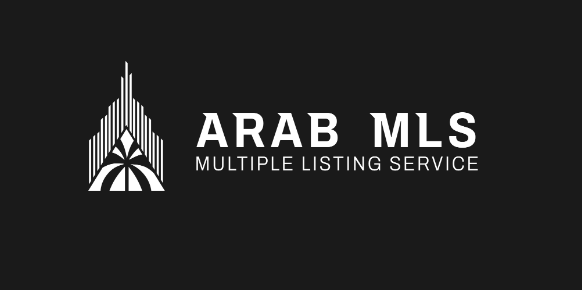The real estate industry is increasingly embracing technology to offer consumers more personalized, efficient, and insightful experiences. One of the most innovative ways this personalization is being realized is through hyper-personalized listing feeds powered by MLS (Multiple Listing Service) behavior data. This approach leverages data collected from user behavior to curate a more tailored property search experience, helping buyers, renters, and investors find properties that truly match their preferences and needs.
Hyper-personalized listing feeds go beyond basic filters like price range or location. By analyzing user interactions and behaviors—such as search history, viewing patterns, preferences, and engagement with specific property features—MLS platforms can create listing recommendations that are highly relevant to each user. This creates a dynamic, responsive environment where the listings change according to individual tastes and needs, ultimately leading to faster decisions, more satisfying results, and higher conversion rates.
In this article, we will explore the power of MLS behavior data, the benefits of hyper-personalized listing feeds, the technology behind these innovations, and the future implications for real estate buyers and professionals.
Understanding MLS Behavior Data
MLS behavior data refers to the data points gathered from users interacting with MLS platforms. This can include:
- Search History: The types of properties a user has searched for (e.g., single-family homes, condos, or multi-family properties).
- Viewing Patterns: How often and how long users view certain listings.
- Saved Listings: Properties that users save to revisit later.
- Click-Through Rates (CTR): How frequently a user clicks on specific listings or features.
- Interaction with Listings: User actions such as requesting more details, scheduling a viewing, or sharing listings.
- Geographic Location: Where the user is searching, and if they show interest in certain neighborhoods or cities.
- Demographic Data: Information like age, income, family size, etc., can also offer valuable insights into buyer preferences.
By combining these data points, MLS platforms can start to build a more accurate picture of each user’s needs and desires. For example, if a user consistently views homes in a specific neighborhood or shows interest in properties with certain amenities (e.g., a home office or backyard), the MLS can begin to serve them with more relevant listings that match these trends.
What Is Hyper-Personalization in Real Estate Listings?
Hyper-personalization in the context of MLS-driven listing feeds refers to the process of using advanced data analytics and machine learning algorithms to tailor property suggestions in a way that feels uniquely relevant to each user. This goes far beyond offering generic property suggestions based on a few basic filters. Instead, hyper-personalized feeds continuously adjust to meet individual user preferences based on their behavior.
Hyper-personalized feeds incorporate the following elements:
- Behavior-Based Customization: Listings are tailored based on how users engage with the platform. If they frequently search for waterfront properties or homes with modern architecture, the system will prioritize these types of listings.
- Real-Time Data Integration: The feed can dynamically adjust to changes in user preferences over time. For example, if a user begins to show interest in a different location or property type, the system adapts immediately to provide more suitable recommendations.
- Recommendation Algorithms: Machine learning algorithms analyze past behavior and can predict what listings might appeal to users based on patterns from other users with similar tastes.
- Adaptive Display: The way properties are displayed can also change based on the user’s interests. For instance, a user interested in luxury real estate might see high-end properties first, while a first-time homebuyer might be shown more affordable options.
The goal of hyper-personalization is to ensure that the properties presented to the user feel as if they were handpicked for them, leading to greater satisfaction and faster decision-making.
Benefits of Hyper-Personalized Listing Feeds
1. Increased User Engagement
By presenting listings that are highly relevant, hyper-personalized feeds keep users engaged. Users are more likely to interact with listings that match their interests and needs, leading to longer time spent on the platform. This engagement can translate to increased inquiries, viewings, and ultimately sales. The better the MLS platform understands user preferences, the more likely users are to return.
2. Higher Conversion Rates
When buyers or renters are presented with properties that are closely aligned with their preferences, they are more likely to take action. Whether it’s scheduling a viewing, submitting an offer, or contacting an agent, hyper-personalized feeds increase the chances of a conversion. The personalization creates a sense of relevance, which often leads to quicker and more decisive actions.
3. Enhanced Customer Satisfaction
Buyers or renters appreciate when they don’t have to sift through hundreds of irrelevant listings. With hyper-personalized feeds, users get a more curated experience, which boosts their satisfaction. Instead of wasting time browsing through properties that don’t align with their preferences, users are presented with only those that match their specific criteria, leading to a more enjoyable and efficient search process.

4. Increased Retention for MLS Platforms
For MLS operators and real estate professionals, offering hyper-personalized listing feeds can increase customer retention. When users feel that a platform is giving them what they want, they are more likely to return to it for future searches, inquiries, or even transactions. In an industry where competition is fierce, retaining users through personalization can lead to long-term success.
5. Smarter Marketing for Agents and Brokers
For real estate agents and brokers, hyper-personalized feeds provide a wealth of data that can be used for smarter marketing strategies. Understanding the types of properties that buyers or renters are interested in allows agents to fine-tune their marketing messages. They can send personalized emails or alerts about new listings that match the user’s preferences, leading to more targeted marketing and better results.
Technology Behind Hyper-Personalized Listing Feeds
To effectively implement hyper-personalized listing feeds, MLS platforms rely on several key technologies and methods, including:
1. Machine Learning Algorithms
Machine learning (ML) algorithms play a critical role in hyper-personalization. These algorithms analyze vast amounts of behavioral data and recognize patterns in user preferences. Over time, ML models learn from user interactions and make increasingly accurate predictions about which properties will be of interest.
For example, a machine learning model might predict that a user who frequently views properties in a suburban area with large yards will likely be interested in other similar properties. The more data the algorithm processes, the better it becomes at fine-tuning property recommendations.
2. Collaborative Filtering
Collaborative filtering is a method commonly used in recommendation systems, where items (in this case, properties) are recommended based on the behavior of other users with similar preferences. For instance, if User A shows interest in certain types of properties, and User B’s behavior is similar to User A’s, then User B might also be shown those same listings.
This approach allows MLS systems to leverage the preferences of multiple users to make smarter predictions about what individual users will like.
3. Natural Language Processing (NLP)
NLP can also play a role in personalizing listing feeds. When users input search queries or interact with listings, NLP algorithms can help understand the intent behind their searches. For example, if a user types “homes near the beach with large kitchens,” NLP can help the system recognize the key features (beachfront location and large kitchens) and prioritize listings that match those criteria.
4. Predictive Analytics
Predictive analytics leverages historical data to predict future actions. By analyzing user behaviors, such as the type of property viewed or the neighborhoods most explored, predictive models can forecast what properties a user is likely to be interested in next. This approach helps the system dynamically adjust the listing feed in real-time to reflect these predictions.
Challenges and Considerations
While hyper-personalized listing feeds provide significant benefits, there are also challenges to consider:
1. Privacy Concerns
With the collection of behavior data comes the responsibility to protect user privacy. MLS platforms must ensure that all user data is handled securely and in compliance with data protection regulations like GDPR (General Data Protection Regulation) and CCPA (California Consumer Privacy Act). Users must also be informed about the type of data being collected and given control over their privacy settings.
2. Data Overload
While personalization is key, there’s a balance to be struck. Too much data can lead to information overload, where users feel bombarded with excessive options. MLS platforms must ensure that the level of personalization doesn’t overwhelm users with too many irrelevant choices, leading to frustration.
3. Algorithm Transparency
There may be a need for more transparency in how recommendation algorithms work. Users and agents should have some understanding of why certain listings are being recommended to them and what data is driving those suggestions. If users feel the algorithm is “biased” or too intrusive, they may opt out of personalized features.
Conclusion
The integration of hyper-personalized listing feeds using MLS behavior data is a groundbreaking approach to improving the real estate experience. By leveraging advanced technologies like machine learning, predictive analytics, and natural language processing, MLS platforms can create highly tailored property recommendations that align with individual user preferences.
The result is a more engaging and efficient experience for buyers, renters, and investors, leading to increased satisfaction, higher conversion rates, and stronger customer retention. As technology continues to evolve, hyper-personalization will play an even more crucial role in reshaping how people interact with the real estate market, making it smarter, faster, and more relevant to each individual.













